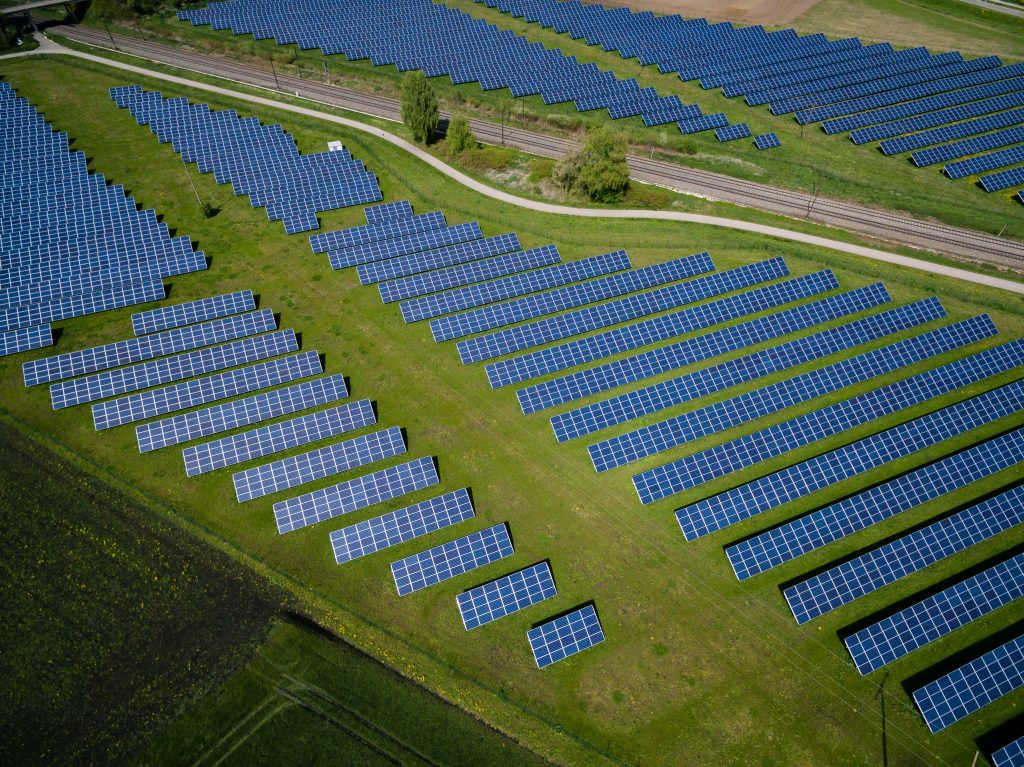How Big Is A Solar Panel
As an Amazon Associate, I earn from qualifying purchases, at no additional cost to you. Disclaimer
I’ve always been intrigued by the incredible power and potential of solar energy, and recently, I found myself pondering over a simple yet crucial question: just how big is a solar panel? As I delved into my research, I discovered fascinating details about these ingenious devices that harness the sun’s energy and convert it into electricity. Join me on this enlightening journey as we explore the dimensions and sizes of solar panels, unraveling the key factors that determine their size and efficiency.

Understanding Solar Panel Dimensions
Definition of Solar Panel
A solar panel, also known as a photovoltaic (PV) panel, is a device that converts sunlight into electricity. It consists of multiple solar cells connected together, which generate direct current (DC) electricity when exposed to sunlight. Solar panels are a key component of solar energy systems and are widely used for both residential and commercial applications.
Importance of Solar Panel Dimensions
Understanding the dimensions of solar panels is essential when it comes to their installation and integration into various structures. The size of a solar panel directly affects factors such as the amount of electricity it can generate, how many panels are needed for a specific project, and the physical space required for their installation. By understanding solar panel dimensions, individuals and businesses can make informed decisions and optimize their solar energy systems for maximum efficiency.
Understanding Solar Panel Size Metrics
Solar panel size is typically measured in terms of its length, width, and thickness. The most common unit of measurement for solar panel dimensions is millimeters (mm). For instance, a commonly used solar panel size for residential applications is 1650 mm by 992 mm, with a thickness of around 35 mm. These metrics can vary depending on the manufacturer, type of solar panel, and its intended use.
Standard Sizes for Residential Solar Panels
Industry Standards for Solar Panel Size
In the field of solar energy, there are certain industry standards that dictate the size of residential solar panels. These standards help ensure compatibility and ease of installation, allowing for smoother integration into existing residential structures. By adhering to standardized sizes, solar panel manufacturers and installers can efficiently design and install solar energy systems for residential use.
Typical Dimensions for Residential Solar Panels
For residential applications, the most common solar panel size is around 1650 mm by 992 mm, as mentioned earlier. This size is known as a 72-cell solar panel and is widely used due to its practicality and efficiency. However, it is worth noting that smaller residential solar panels, such as 60-cell panels measuring around 1650 mm by 992 mm, are also available. These variations in size offer flexibility when designing a solar energy system for a residential property.
Factors Affecting Residential Solar Panel Size
The size of residential solar panels can be influenced by several factors. One such factor is the amount of available roof space for installation. If a roof has limited space, smaller solar panels may be chosen to maximize electricity generation within the given area. Other factors, such as budget, energy consumption, and aesthetic preferences, may also play a role in determining the size of residential solar panels.

Sizes for Commercial Solar Panels
Differences Between Residential and Commercial Solar Panels
While residential and commercial solar panels serve the same purpose of generating electricity from sunlight, there are a few key differences in their sizes. Commercial solar panels are generally larger than their residential counterparts. This is because commercial buildings often have more available space, such as expansive rooftops or open land, allowing for the installation of larger solar panels.
Standard Dimensions for Commercial Solar Panels
The standard dimensions of commercial solar panels can vary depending on the specific manufacturer and project requirements. However, a common size for commercial solar panels is around 2000 mm by 1000 mm, with a thickness similar to residential panels. These larger panels are designed to generate higher amounts of electricity, making them suitable for powering large business establishments.
Importance of Sizing in Commercial Solar Installations
In commercial solar installations, sizing plays a crucial role in determining the system’s overall electricity generation and profitability. By utilizing larger solar panels, businesses can maximize energy production and reduce the number of panels required for a given project. This can result in cost savings on both equipment and installation labor. Furthermore, properly sized commercial solar panels can help meet the energy demands of larger establishments effectively.
Weight of Solar Panels
Why Weight Matters in Solar Panel Installations
The weight of solar panels is an important consideration during the installation process. Understanding the weight helps ensure the structural integrity of the installation surface, whether it is a roof or a ground-mounted structure. Improperly assessing the weight of solar panels may lead to structural damage, jeopardizing the safety and longevity of the solar energy system.
Typical Weight Range for Solar Panels
The weight of solar panels can vary depending on their size, composition, and manufacturer. Generally, residential solar panels weigh between 15 to 25 kilograms each. However, larger commercial solar panels can weigh up to 35 kilograms or more. It is crucial to consult the manufacturer’s specifications for accurate weight information before installing solar panels.
Factors That Influence the Weight of Solar Panels
Several factors contribute to the overall weight of solar panels. The main factor is the type of solar cell technology used, whether it is monocrystalline, polycrystalline, or thin-film. Monocrystalline panels, known for their high efficiency, tend to be heavier compared to polycrystalline or thin-film panels. Additionally, the frame material, glass thickness, and additional features like built-in micro-inverters or optimizers can also affect the weight of solar panels.

Thickness of Solar Panels
Importance of Panel Thickness
The thickness of solar panels plays a role in their overall durability, flexibility, and performance. Panels with inadequate thickness may be more susceptible to damage, especially in harsh weather conditions. Additionally, the thickness of solar panels can impact their aesthetics, ease of installation, and compatibility with existing structures.
Typical Thickness of Solar Panels
The typical thickness of solar panels is around 30 to 40 millimeters. This range provides a balance between durability and weight, ensuring that the panels can withstand various weather conditions while remaining manageable during installation. However, it is essential to consult the manufacturer’s specifications for precise information regarding the thickness of specific solar panel models.
Effects of Thickness on Solar Panel Performance
The thickness of solar panels can indirectly impact their performance. Thicker panels may have a higher heat capacity, allowing them to dissipate heat more effectively and maintain better performance in high-temperature environments. Conversely, thinner panels may have a higher power-to-weight ratio, making them suitable for applications where weight reduction is a significant consideration.
Solar Panels for Small-Scale Applications
Common Sizes for Small Solar Panels
Small-scale solar panels are often used for portable or off-grid applications. These panels are compact, lightweight, and designed to provide power for smaller electronic devices or charge batteries. Common sizes for small solar panels range from around 100 mm by 100 mm to 500 mm by 500 mm, depending on the intended use.
Use Cases for Small Solar Panels
Small solar panels have a wide range of use cases. They are commonly used in outdoor adventures, such as camping or hiking, to power portable electronic devices like smartphones, GPS devices, or lanterns. They also find applications in powering small garden lights, solar-powered water pumps, or providing electricity to off-grid cabins or recreational vehicles.
Avenues of Availability for Small Solar Panels
Small solar panels are readily available through various channels. They can be purchased from solar panel manufacturers, online retailers, or specialty stores that cater to renewable energy products. Additionally, small solar panels are often included in solar power kits or bundled with solar-powered devices, making them easily accessible to consumers.

Solar Panels for Large-Scale Applications
Dimensions for Large-Scale Solar Panels
Large-scale solar panels are designed for commercial solar installations or utility-scale solar farms. The dimensions of these panels are significantly larger compared to residential or small-scale panels. They can vary depending on the specific manufacturer and project requirements, but common sizes for large-scale solar panels range from around 2000 mm by 1000 mm to 4000 mm by 2000 mm.
Applications and Use-Cases for Large Solar Panels
Large solar panels are primarily used in utility-scale solar projects where large amounts of electricity need to be generated. These projects typically involve ground-mounted solar arrays and are employed by utilities or large organizations to meet renewable energy goals, power commercial buildings, or feed electricity into the grid. Large solar panels are also suitable for industrial applications that require significant energy generation.
Considerations when Installing Large Scale Solar Panels
When installing large-scale solar panels, several considerations come into play. These include available land space, structural requirements, interconnection capabilities, and regulatory compliances. Effective planning and engineering are crucial to ensure the successful integration of large solar panel systems and maximize the return on investment for such projects.
Custom Size Solar Panels
Availability of Custom Solar Panels
In some cases, standard-sized solar panels may not be suitable for specific installation requirements. Custom size solar panels offer a solution by allowing for tailor-made dimensions that align with unique project needs. Custom solar panels are available through select manufacturers and require detailed specifications to ensure accurate production.
Factors to Consider When Ordering Custom Solar Panels
Ordering custom solar panels requires careful consideration of various factors. Firstly, the available space and physical constraints of the installation location must be accurately measured and communicated to the manufacturer. Additionally, project objectives, energy requirements, and budgetary considerations should be discussed with the manufacturer to determine the optimal solar panel size for the desired outcomes.
Potential Downsides of Custom Solar Panels
While custom solar panels offer flexibility, there can be potential downsides to consider. Custom panels may require longer lead times for manufacturing and delivery, which can impact project timelines. Furthermore, the cost of custom panels may be higher due to the specialized production process and lower economies of scale. It is essential to evaluate the benefits and drawbacks of custom panels before deciding on their use.

Influence of Technology on Solar Panel Size
How Technology Affects Solar Panel Size
Technological advancements in solar panel manufacturing have contributed to improvements in efficiency, performance, and size reduction. As technology evolves, manufacturers have been able to produce more compact and lightweight solar panels without compromising their energy-generating capabilities. This has led to increased versatility and integration possibilities for solar panels in different settings.
Recent Technological Advances in Solar Panel Manufacturing
Recent advancements in solar panel manufacturing have resulted in several breakthroughs. For instance, the introduction of half-cut solar cells has allowed for improved module efficiency and reduced power loss due to shading or degradation. Additionally, new materials and manufacturing techniques have enabled the development of flexible or transparent solar panels, opening up even more possibilities for integration in diverse settings.
Future Trends in Solar Panel Size and Efficiency
The future of solar panel size and efficiency is promising. Ongoing research and development efforts continue to focus on improving energy-generating capabilities while further reducing the size and weight of solar panels. Emerging technologies, such as perovskite solar cells or multi-junction solar cells, show potential for higher efficiency and compactness, paving the way for even smaller and more powerful solar panel solutions.
Conclusion: Size Matters in Solar Panels
Why Solar Panel Size is Important
Understanding the dimensions of solar panels is crucial for optimizing solar energy systems. Factors such as installation space, energy requirements, and system efficiency all depend on correctly sizing the solar panels. By selecting the right size, individuals and businesses can harness the maximum potential of solar energy and contribute to a sustainable future.
Considerations for Choosing the Right Solar Panel Size
When choosing the right solar panel size, it is essential to consider various factors. These include available space, energy consumption patterns, budgetary considerations, and the specific requirements of the installation site. Evaluating these factors and consulting with experts or solar panel manufacturers can ensure an informed decision and the best outcome for a solar energy system.
Final Thoughts on Solar Panel Size
Solar panel size plays a significant role in the design, installation, and performance of solar energy systems. Understanding the dimensions, weight, and thickness of solar panels is vital for successful integration into residential, commercial, or large-scale projects. As technology continues to advance, the future holds exciting possibilities for even smaller, more efficient, and versatile solar panels, driving the widespread adoption of solar energy worldwide.

